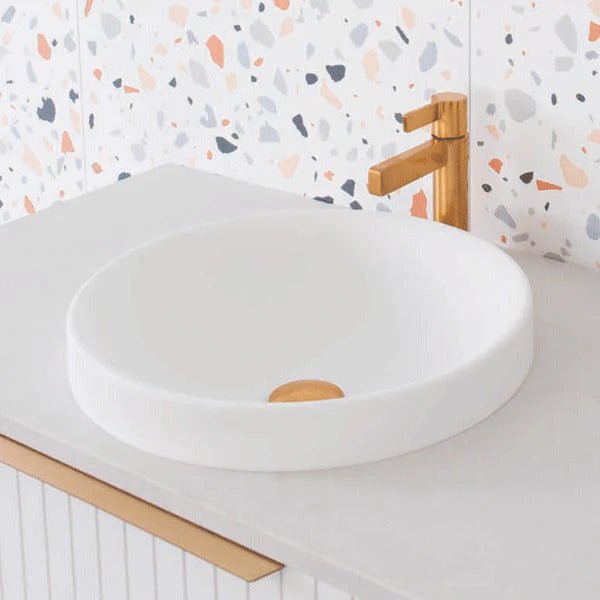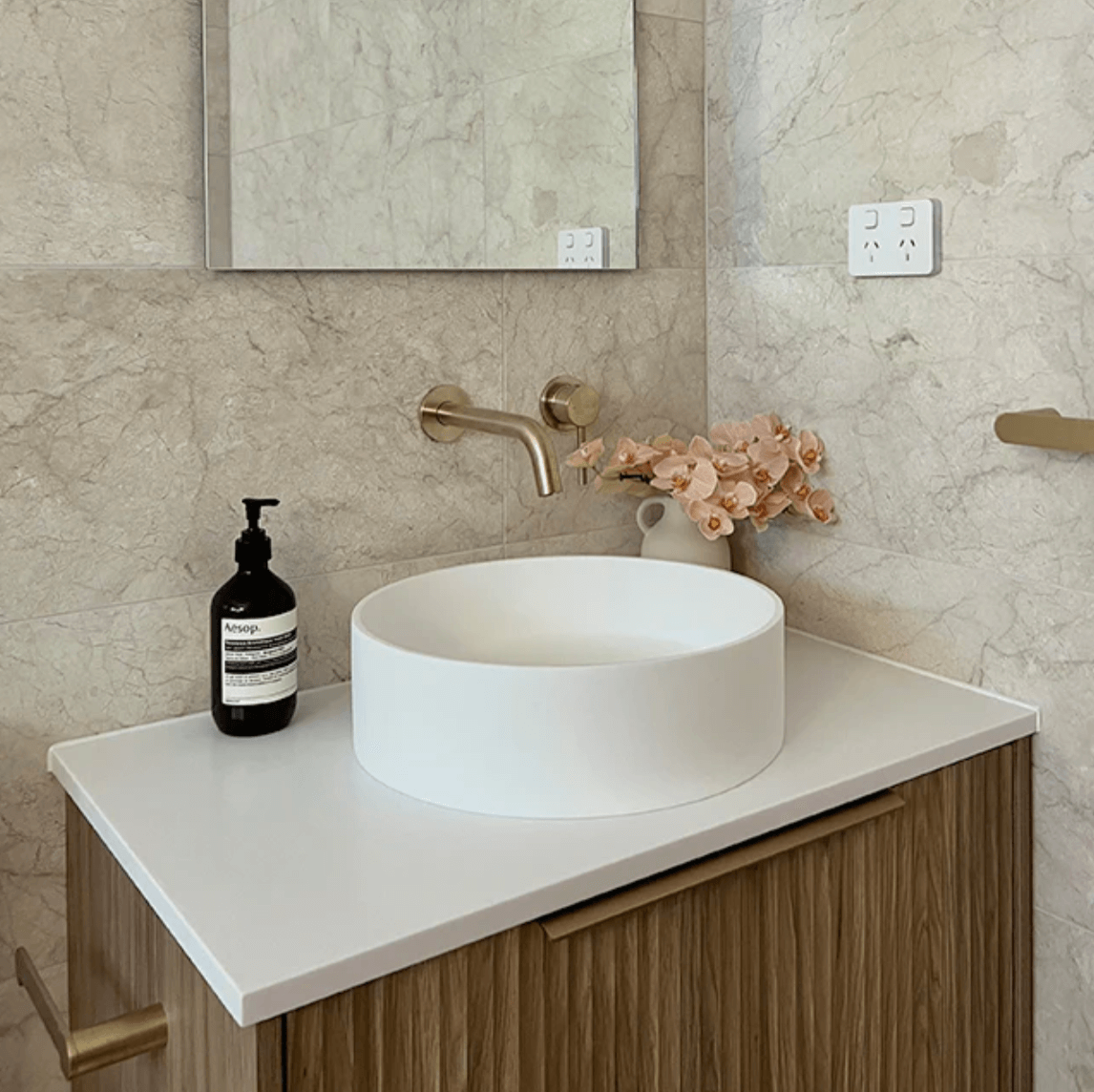When matching a basin with a vanity unit, consider the following factors:
- Size and Shape: Ensure that the basin fits comfortably on the vanity unit without overhanging or being too small for the space available.
- Style and Design: Choose a basin and vanity unit that complement each other in terms of style, whether it's modern, traditional, or contemporary.
- Material: Select materials that are durable and easy to clean for both the basin and the vanity unit, such as ceramic, porcelain, or solid surface materials.
- Tap Compatibility: Ensure that the basin has pre-drilled tap holes that match the tap you intend to install, or choose a basin that allows for customisation in tap placement.
- Plumbing Configuration: Check that the plumbing connections for the basin align with the plumbing outlets in the vanity unit to ensure proper installation and functionality.
- Budget: Keep your budget in mind when selecting both the basin and vanity unit, ensuring that they provide value for money while meeting your aesthetic and functional needs.













